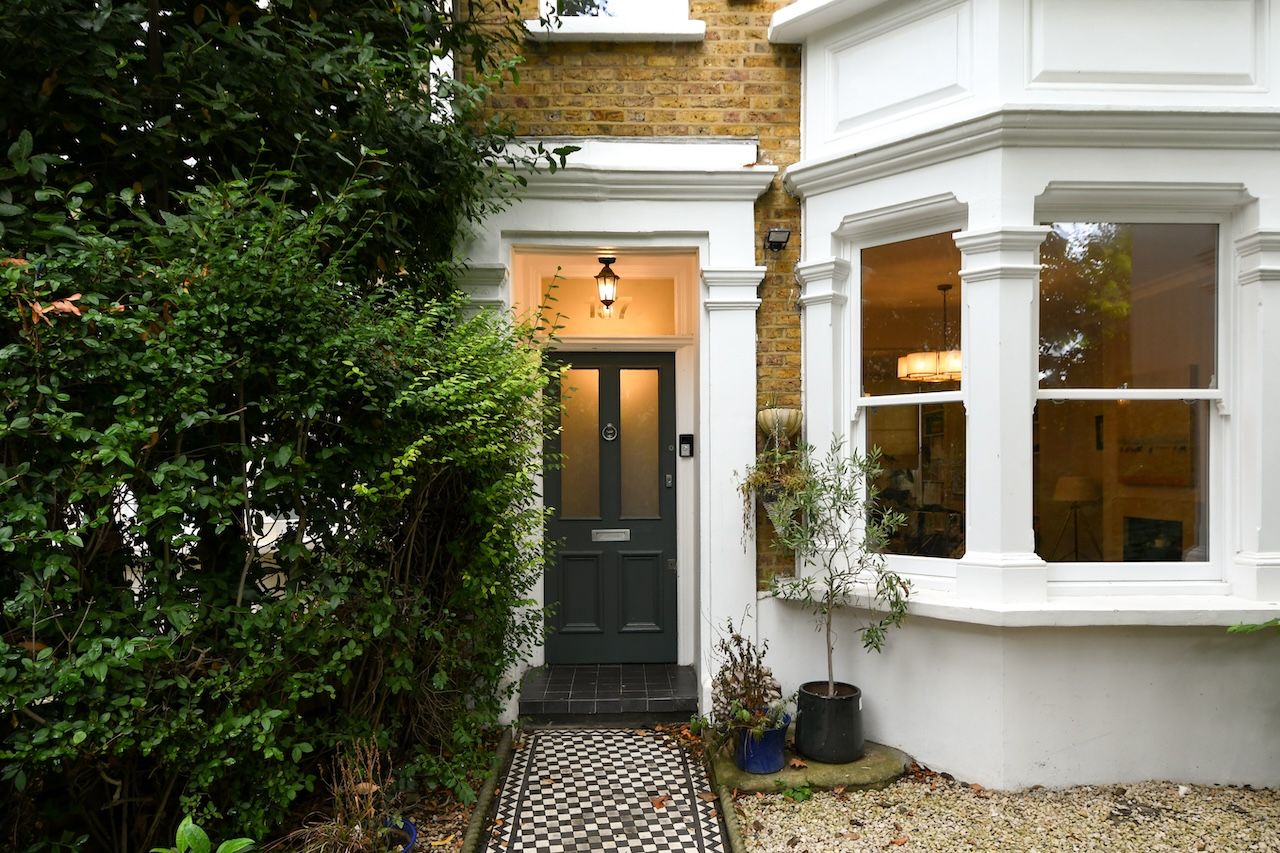How Much Do Loft Conversions Cost in 2025?

Loft conversions remain one of the most valuable home improvements in 2025. Understanding the cost of loft conversion in 2025 is essential to properly plan your budget and maximize return on investment.
How much does a loft conversion cost?
Depending on your location within the UK, the price of a loft conversion will vary. Furthermore, the type of conversion and the legal and technical constraints placed upon it will also play a key role in determining the likely cost. Excluding likely finishes such as windows, flooring, and sanitary ware, the typical cost of a loft conversion will cost between £2,400 and £4,000 per square metre.
The variation in the cost per square meter depends on the type of loft conversion, the size of the alterations to the roof, the access, the type of finishing and the location.
Special projects to develop the roof space in period buildings can require higher investments. In prime locations, they can double the value of a property after they’ve been completed, like this roof development project in Chiswick, London.
ROOFLIGHT LOFT CONVERSION
It requires the installation of rooflight windows in the roof to allow sunlight to enter the loft. It usually includes strengthening of the existing floor, flooring, insulation, plasterboarding and installation of rooflights. They are generally allowed under permitted development outside conservation areas and other designated areas. For more information on permitted development rights for householders you can visit the official government web site.
With a rooflight conversion you keep the alterations to a minimum. This means the result will be basic, without budget for plumbing, extensive electrical work etc.
The average rooflight loft conversion cost in the UK can be between £40,000 to £60,000.
DORMER LOFT CONVERSION
This consists of a boxed-shape structure that replaces one of the slopes of a pitched roof. The result is a flat-roofed space that allows the installation of full-sized windows and the use of full-height furniture and other appliances. They are sometimes allowed under permitted development when not in designated areas.
The cost is higher than that of a roof light conversion, as it requires the complete rebuilding of one roof pitch plus the full associated internal works.
The average cost of a standard dormer loft extension is between £60,000 and £100,000. For an L-shaped dormer, it can go from £80,000 to £130,000.
HIP-TO-GABLE LOFT CONVERSION
In end-of-terrace or detached properties, the roof slope at the end of the terrace or of the detached house is replaced with a vertical brick wall. It is combined with a dormer conversion to maximise the space. The alterations to the roof are extensive and you need to build a brick gable wall, as opposed to the stud wall needed for the dormer conversion.
The average cost of a hip-to-gable conversion is higher than a dormer extension, and can go between £65,000 and £110,000.
MANSARD LOFT EXTENSION
A mansard loft conversion creates a flat roof space, with four or two of the external walls gently sloped. It can extend to create an additional storey on top of an existing building. It is an extensive building alteration and it always requires planning permission.This design is the most expensive option for a loft conversion.
The average cost of a mansard loft extension can go from £100,000 to £150,000, assuming the mansard covers the extension of the loft only.
How location can change the loft conversion cost
When discussing the topic of building works, there is no one-size-fits-all. This is reflected in the costs, too. In general, building works are cheaper where the property market prices are lower.
Much of the variation is due to the nature of expensive property areas: generally they are busier, more densely built and inhabited. This translates into higher costs, for multiple reasons. For example:
- Building site access: in a busy metropolitan city, often there is no or very little space for parking, placing machinery, scaffolding, rubbish skips etc
- Cost of labour: in a place with a higher cost of living, the workers are paid higher salaries or daily rates
- Cost of materials and deliveries: because of the higher salaries, rent cost of commercial space, constraints in the size of transporting vehicles and distance from production plants, prices for supplies are higher in metropolitan areas.
For a better idea of the most expensive and the cheapest areas in the UK, as an average:
- Scotland and South East England are the most expensive, with peaks in Edinburgh and London
- Northern Ireland is the cheapest area for building costs in the UK
Loft Conversion Price in London 2025
The loft conversion price in London continues to be significantly higher than in most other UK regions in 2025. A standard dormer project in Greater London now ranges between £50,000 and £110,000, while a mansard can reach £150,000+ depending on location and finishes.
Explanation of the professional fees
When planning any building works, you will need to consider professional fees in addition to the building costs. Even if planning permission is not required, you will still need drawings of your loft conversion to be produced for the council, the building regulation officers and for the building teams.
Ensuring the drawings are produced by a professional is always a sensible approach as they minimise the likelihood of miscalculation and incorrect information. Producing and submitting unclear or incorrect requirements and measurements can cause both delays and mistakes that can be very expensive to rectify at a later point.
PLANNING FEES
Whilst loft extensions can often be completed without planning permission, you will still need to file for a Certificate of Lawfulness from your council. This currently costs £103 in England.
Fees for filing for the planning permission differ amongst the councils and heavily depend on the amount of work the planning authorities need to process the application. Householder applications, required for extensions and garden buildings, are around £210.
For more information on the planning process and fees across the UK, you can visit the Planning Portal.
DESIGN FEES
For a loft conversion, you will need to produce at least building regulation drawings. For a standard loft conversion, the design fees would be between £3,000 to £6,000.
Furthermore, you will need to budget for structural calculations, such as whether a new beam or other structural alterations are required. The fee for the structural design will range from £1,800 to £3,600 for a standard loft conversion.
Design and the associated drawings produced for a loft conversion planning application, can cost between £4,800 and £10,000.
Keep in mind that design costs can vary substantially, depending on the architects you appoint and the complexity of the design A cheaper alternative is to appoint a consultant, rather than choosing an architectural practice. Alternatively you can choose to hire a design and build company, who will quote for your loft conversion including the design fees. In some cases, the planning fees will also be included in a design and build quotation.
PARTY WALL FEES
If your loft conversion will need building work to a wall that sits astride a boundary you will need Party Wall agreements with all the neighbours that share that party wall with you.
This is very often the case in terraced or semi detached properties, or if you are extending a flat in a block. The typical cost of a party wall agreement depends on whether your neighbours and you will want or need to appoint a party wall surveyor.
Typically, party wall agreements will cost £1000 to £1,800 per neighbour.
Keep in mind it is possible to serve the notices yourself without the need to pay for a surveyor if your neighbour agrees on the proposed work, and they don’t appoint a surveyor themselves.
BUILDING CONTROL FEES
You will need a Building Control certificate at completion, which certifies that all the work is in compliance of building regulations. The average cost for a loft conversion is approximately £1,000, depending on the size and the nature of the works.
You can liaise directly with the local authority or engage a government-approved inspection company. Both will check that the work is carried out in compliance and will issue the certificate at completion.
The loft conversion cost can increase if…
Whenever a loft conversion project is not a standard one, costs can increase accordingly. The most common reasons why the budget can be higher than the average are:
Number of parties involved in the party wall process:
The higher the number of parties involved, the higher the cost of party wall agreements. Plus, any dispute causes delays and even more additional costs.
Complex structural design and implementation:
Your loft extension might need more beams or columns than the average, or the shape or the design might require specific structural solutions.
Building access:
Any constraint on the accessibility of the site can significantly increase the costs.
Age and conditions of the existing building:
When making structural alterations to an old building, surprises can happen while stripping out. It’s not uncommon that some of the existing joists and beam will need strengthening or replacement that cannot always be planned ahead.
Height of the existing building:
For high buildings, like blocks of flats, the cost of transporting the materials onto the site. So are scaffolding and rubbish removal.
Finishes and interiors:
Any bespoke solution has an impact on the cost of a loft conversion. High end finishes also cause an increase compared to the average costs.
Project duration:
If you have tighter timelines for completion than the average, the project will need more workers on site at the same time. Delivery of materials can also be affected. This means higher logistics and organisational costs, also considering there is a maximum in the number of people who can work on a loft conversion at the same time, without interfering with each other’s work.
How much should you spend on a loft conversion?
When planning building works to your home, it’s important to consider how much value the alterations will add to the current property. It is recommended to consult local estate agents, to better understand the potential sale price of properties in your area where a loft extension was added.
Once you understand the increase in value that a loft conversion could add to your property value, you can use that figure to support many decisions in the course of the project. Design solutions, finishes, space, lighting etc can be evaluated and selected, according to your understanding of the investment return.
This is an excellent way to stay in control of your budget and be confident that the extension is a worthwhile investment.
See Our Real Loft Conversions
Looking for some inspiration before you start your own loft conversion? Take a look at some of our most popular projects across London. These show what’s possible with different types of loft extensions—from rooflight to mansard—and design solutions that add value and space.
Loft and Side Extension with Full House Renovation, Willesden, London
A full transformation of a loft conversion and side extension with full interior renovation in North West London.
Luxury Loft with Roof Terrace in West London (Hammersmith)
A premium mansard loft conversion with roof terrace access, bespoke finishes and city views.
View our portfolio
See more loft extensions and design ideas across London and the UK.
Seeing real examples helps you visualise the end result—and make better decisions on layout, finish and investment.
FAQs: Loft Conversion in 2025
How much does a loft conversion cost in 2025?
In 2025 a loft conversion in the UK will cost between £2,400 and £4,500 per m2 depending on location, access and type of conversion.
What is the average cost for loft conversion in London?
The loft conversion cost in London starts at £70,000 for basic dormers and goes up to £150,000+ for mansard or complex rooftop projects.
Is a loft conversion worth it in 2025?
Yes, loft conversions are still a great ROI in 2025 especially in London where extra living space adds so much value to your property.
Vinz is the CEO and co-founder of houseUP. He is a true authority in financial planning and risk management, coming from years of working in financial services and digital payment industries
houseUP is a construction company in London, specialised in high end residential and commercial projects.

